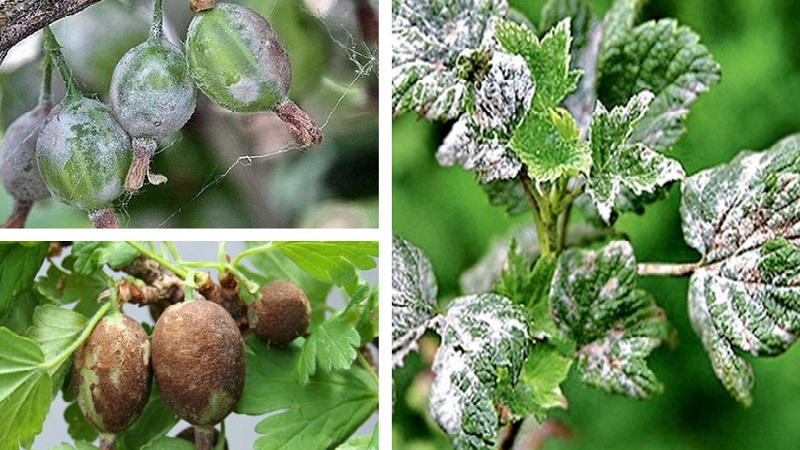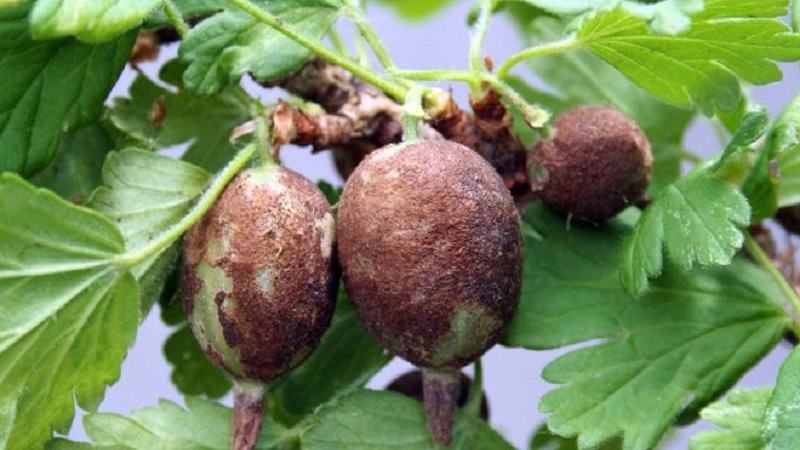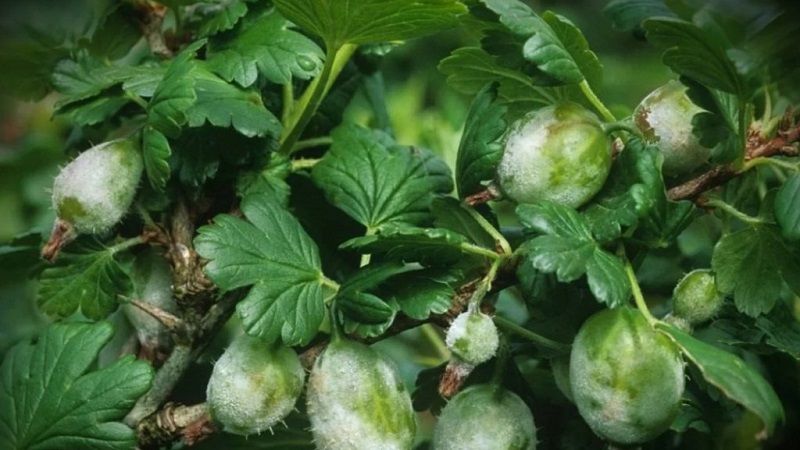How to deal with gooseberry mold
Almost everyone when growing gooseberries in one way or another encounters diseases of this plant. Mold appears on the gooseberry bushes, they grow poorly, the berries crumble.
Mold control methods depend on the disease that affects the bush. If the developing disease is recognized in time, the plant can be saved.
The content of the article
Mold-like diseases: how to recognize and fight them
Many gardeners complain about white or gray bloom on gooseberries that begins to appear immediately after flowering or later on berries... This attack causes many problems when growing crops.
So why does gooseberry grow moldy? The most common cause is fungal diseases.

Causes of gooseberry fungal infection:
- landing in the lowlands or in the shade;
- increased air or soil humidity;
- a large number of shoots;
- untimely removal of weeds;
- excess nitrogen;
- close-planted diseased plants.
Before determining how to get rid of the fungus on the gooseberry, consider what diseases are.
Interesting on the site:
Why do red spots appear on gooseberry leaves
Gray rot
The disease develops actively at high humidity, affects the lower part of the shoots and causes rotting of fruits... Brown-gray spots form on the stems, leaves and berries are covered with a gray-smoky bloom. In rainy weather, spores germinate through the skin of the berries. Sick berries later dry up or fall off. If the weather is hot and dry, the mycelium dies, and the dead parts of the leaves crack and fall off.

Rust
This fungus hibernates on fallen leaves or shallow soil... In the spring, spores are carried by the wind and hit the bushes. Planting in a damp place where there is a lot of sedge also contributes to the disease. The disease attacks the plant at the very beginning of summer. Bright orange spots appear on the leaves, and a bulge forms on the underside, which contains spores. The berries are covered with an orange bloom. By the middle of summer, the berries and leaves fall off.

Powdery mildew
This is the most common gooseberry disease. She reveals herself in early June. A white bloom forms on the leaves, which then passes to the shoots... Later, the plaque becomes gray, thickened, and then blackens. Fungal spores are found on the leaves. They are well transferred by the wind to other plants. The leaves dry up and curl. The berries are completely covered with bloom and do not grow.
Important! If the gooseberry is left untreated, it dies after 2-2.5 years.

How to handle mold on gooseberry berries
They fight mold with chemicals and folk methods... The prevention of fungal diseases also plays an important role. To make the plant less susceptible to disease, you should choose more resistant varieties, plant and feed the bushes correctly, loosen the soil, burn cut branches and fallen leaves.
Reference. Experienced gardeners advise water the culture boiling water before the buds open, and plant dill and garlic nearby.
If the gooseberry is sick, as if the berries are covered with mold, you can save itby choosing the right remedies for each disease.
The crop is processed several times during the growing season:
- before kidney swelling;
- during swelling of the kidneys;
- before flowering, during budding;
- immediately after flowering.
Important! Plants should be treated with chemicals in strict compliance with the instructions and safety measures.
The solution is sprayed on the bushes evenly, while the same amount of the drug should fall on the lower part of the leaves as on the upper... To do this, keep the spray tip at a distance of 50-60 cm from the bush and do not hold it in one place for a long time.
It is not recommended to allowso that the solution flows to the ground.
Precautions to be taken when handling chemistry: Long-sleeved, closed-base clothing, respirator, rubber gloves and goggles.

In the fight against gray mold The preparations "Strobi", "Zircon", "Horus", "Fundazol", "Topaz" have proven themselves.
Rust is effectively destroyed copper sulphate and Bordeaux mixture, preparations "Topaz", "Abiga-Peak", "Baylon", "Fitosporin".
With powdery mildew use "Fundazol", "Amistar Extra", "HOM", "Skor", "Previkur", "Topaz".
For those who prefer folk methods of dealing with gooseberry diseases, there are several effective ways:
- Ash infusion. For 12 liters of water, take 1 kg of ash and insist for 3 days. To make the solution better adhere to the leaves, liquid laundry soap is added to it.
- Potassium permanganate. The solution is prepared at the rate of 10 g of potassium permanganate per 15 liters of water.
- Mullein. Mix 3 parts water and 1 part mullein and leave in the shade for 3 days. Then the solution is filtered and water is added to the volume of the bucket.
- Milk solution. The remedy is used at the very beginning of the disease, later it has no effect. 1 liter of milk is diluted in 1 bucket of water.
Before starting treatment of plants, remove its affected areas, leaves, shoots and berries, after which they are burned.
Important! With a strong infection of the plant by the fungus, folk remedies do not help.
How and what to wash off the mold from gooseberry berries and is it possible to eat them after that
Berry mold can be washed off with regular vinegar... For 4 cups of water, take 0.5 cups of 9% vinegar. The berries are dipped in a solution and washed well.
Also heat treatment of berries is suitable... They are placed in hot water (60-70 ° C).
These measures are used if mold is just starting to appear... If fruit damage is already visible, they should not be washed and eaten. At this stage, the mycelium of the fungus penetrates into the fruit. These berries contain toxins and can cause acute stomach upset.
Read also:
Conclusion
Gooseberries, like other horticultural crops, are often subject to mold growth. To prevent this, they choose resistant varieties, apply preventive measures and carefully monitor the plant so as not to miss the initial stage of the disease. If mold appears, the bushes are treated immediately.
At the very beginning of the disease, gooseberries can be saved using folk methods. With extensive damage to the plant, effective chemicals are used.
Mold cannot be ignored, since the infected plant will die anyway.